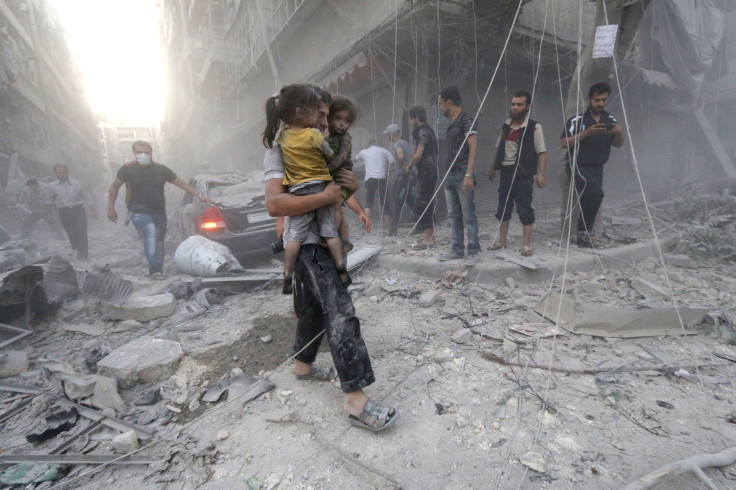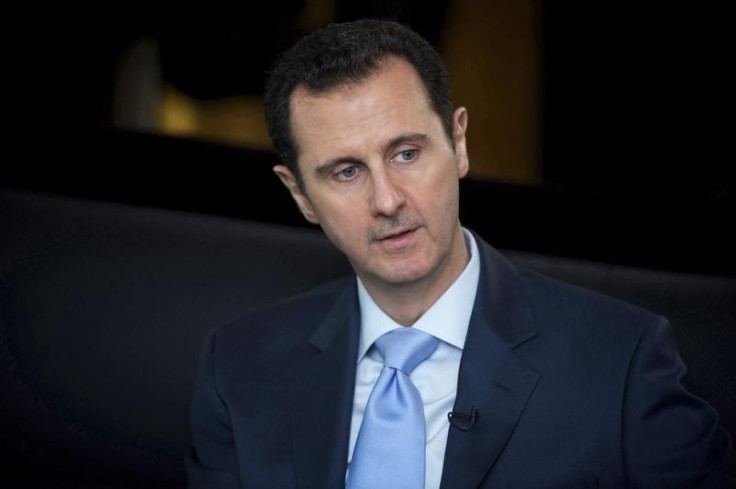Causes Of 2011 Syrian Civil War: Timeline Of Five Years Of Airstrikes, Bombings, Key Dates And Events

On the eve of the fifth anniversary Tuesday of the ongoing violent conflict in Syria, sustainable peace seems far from reach. Despite a partial ceasefire and an announcement Monday from Russia that it would withdraw troops from the region, the future of the war-torn country remains uncertain.
The conflict centers around Syrian President Bashar Assad, who took power in 2000 following his father's death. While citizens were at first hopeful that the young Assad would usher in a more democratic government, he quickly followed in his father's footsteps — leading with an iron fist, cracking down on dissent and protests and imprisoning political dissidents. As anti-government protests grew throughout the nation in the spring of 2011, violent clashes eventually spiraled into war, with pro- and anti-government factions increasingly split along sectarian lines.
Here's a look back at what started the Syrian civil war and how it has progressed over five bloody years.
June 2000: Bashar Assad succeeds his father, becoming president of Syria.
2001: Arrests of political dissidents continue, with intermittent periods of amnesty, as Assad dispels hopes that he will make a break from his father's style of rule.
May 2004: The U.S. imposes sanctions on Syria for supporting terrorism and failing to stop Islamic militants from entering Iraq.
May 2007: Top dissidents, including Kamal Labwani and Michel Kilo, are jailed.
March 15, 2011: Protesters in the southern city of Daraa demand the release of political prisoners, triggering a series of nationwide demonstrations.
May 2011: The Syrian government, led by Assad, deploys soldiers and tanks to Homs, Daraa and areas of Damascus to quash the anti-government protests.
August 2011: Leaders throughout the world, including U.S. President Barack Obama, call on Assad to step down, as violence grows throughout the region.
August 2011: Defected Syrian military officials form the Free Syrian Army, one of the main rebel groups opposing Assad.
November 2011: The Arab League votes to suspend Syria and issues sanctions on the country.
December 2011: A double suicide bomb in Damascus kills 44 people while at least 200 are massacred by security forces in the Idlib province.
January 2012: The bombardment of Homs and other cities continues, as the Al-Nusra front, a rebel group created in mid-2011 with help from Al Qaeda and the anti-Assad militant group known as the Islamic State, officially declares its existence and emerges as one of the foremost opposition forces.
April 2012: Former United Nations Secretary-General Kofi Annan brokers a ceasefire, as reports continue to surface of Assad's forces carrying out massacres and assassinations.
September 2012: The U.S. promises $45 million to provide rebel forces fighting Assad with non-lethal aid.

August-September 2013: Chemical weapons attacks carried out by Assad's government kill dozens in Syria.
March 2013: Rebel forces capture the city of Raqqa, making it the first large city controlled by opposition fighters. Meanwhile, more than 1 million Syrians are declared political refugees by the U.N.
June 2014: The Islamic State group seizes vast swathes of territory in northern Iraq and declares a caliphate.
August 2014: The Islamic State group, also known as ISIS, seizes the northern city of Raqqa.
September 2014: The U.S., along with five Arab nations, begins airstrikes targeting ISIS near Aleppo and Raqqa.
September 2015: Russia begins airstrikes on terrorist targets in Syria. Observers on the ground, including the U.S. military, say that Russian airstrikes are not just attacking ISIS but are targeting rebel groups in an attempt to prop up Assad.
February 2016: The major parties in the conflict recognized by the United Nations announce a partial ceasefire.
© Copyright IBTimes 2024. All rights reserved.






















